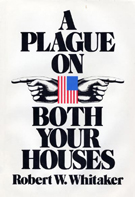Archive for August 29th, 2005
Silence
Posted by Bob in Musings about Life on 08/29/2005
In New England they had a saying, “The Lodges speak only to the Cabots. The Cabots speak only to God.”
In New England a really classy person did not speak to those who were beneath them.
I was raised to consider that trashy.
There is tale about General Lee which shows how different the Southern mind is. As General Lee passed, an old black slave stood up, took off his hat, and said, “Good day, General Lee.”
General doffed his hat and said, “Good day to you.”
A French reporter, who did not believe in race distinctions but did believe in class distinctions, was astonished. He said to Lee, “You have just taken your hat off to a SLAVE.”
Lee replied, “He cannot be more courteous than I am.”
I don’t know how many of you are familiar with the Tar Baby Story in Uncle Remus’s tales. The Tarbaby was just a lump of tar with a hat on.
How could a lump of tar be a TRAP?
Nobody who read Uncle Remus’s tales had any question about that. To them, it was understood that not speaking was an invitation to a fight.
Ole Brer Rabbit hopped by and said, “Good day to you.”
“And the Tarbaby, he didn’t say nothing.”
“Brer Rabbit stopped and he said, “I said Good Day to you!”
“And the Tarbaby, he didn’t say nothing.”
Finally Brer Rabbit for so furious he hit Tarbaby and got stuck in the tar.
Brer Fox, who set the trap, knew that someone who didn’t speak back would get hit. Everybody reading the story knew that anybody who refused to speak would get hit.
To a Southerner a person who does not speak is recognizing his humanity. It is an act of violence.
I think in those terms so deeply that what is native to me is amazing to other people.
Never in my life have I ever “cut someone off.” I have had many threats and enemies, but my reaction has always been to confront people if they called me or confronted me.
All my life I have felt that it was all right for a woman to refuse to speak to someone, but for a man it is inexcusable.
There are exceptions, just as there are exceptions to the rule that you don’t shoot people. But for me, refusing to speak to someone is a form of overt violence.
Horrors
Michael Landon’s first movie was called “I Was a Teenage Werewolf.”
It was made when I was just entering my teens. There was a massive spate of horror movies then, all publicized by posters featuring beautiful women being attacked by monsters or maniacs.
There was a scene in “I Was a Teenage Werewolf” where a voluptuous tennage girl in a tight gym outfit was being attacked by Michael Landon as the werewolf. I must have seen that scene repeated a dozen times on television. Every time there was a discussion of violence in the movies or movies in general or any other excuse, that scene was repeated.
There was a movie called “The Woman Eater.” It showed a plant to whom women were fed as a sacrifice.
I seldom say anything complimentary about carnivorous plants, but I must say this one had very specific tastes for a vegetable. The only women it ate were young, spectacularly beautiful starlets.
In the drive-in theaters many girls would scream at the evil monster and grab their boyfriends.
A scream and a grab is usually a bother. But the boyfriends tolerated it very well.
“The Woman Eater” was a box office smash, but they didn’t make a sequel called “The Old Man Eater.” I never understood why that was.
But now to the point: this was the 1950s, remember. The rape rate was miniscule compared to today. The murder rate was miniscule compared to today.
If you think violence is caused by movies, you really need to take a look at the billboards from that day
Nor was this new.
The main advertisement for Dracula about 1931 was a huge color picture of the vampire drinking the blood of a woman whose lovely leg was exposed. It was “sex and violence” incarnate. That picture was infinitely sexier than any porn movie today that shows women naked.
In the 1930s King Kong advertisements featured the huge beast holding a squirming, screaming Faye Wray in his hand. Half the audience was female.
King Kong was made in the middle of the Depression. If poverty or violent movies caused crime, the crime rate in the 1930s would have been astronomical.
It wasn’t.
Sometimes the 1930-1960 period is referred to as “an age of innocence.” In the movies, it was anything but. People shot each other without any hesitation or moral reflection. James Cagney started as a song-and-dance man, but he made his fame by killing people in droves.
If you attacked a woman on the street, a man in the 1930s would not have hesitated to shoot you down in cold blood. Can you imagine a man doing that today?
Thay may have had something to do with the fact that women were not so wantonly attacked back then.




Recent Comments